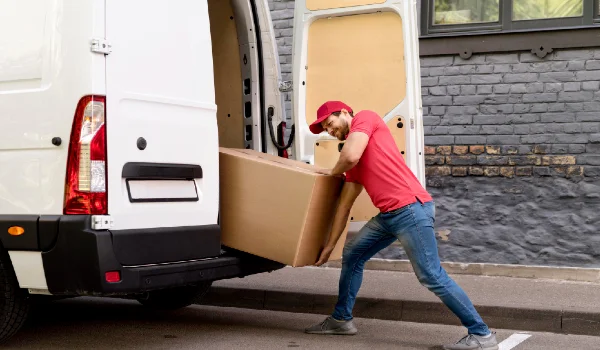


Are you moving interstate? Have you pondered over how your pet will handle the journey? Moving with pets is much more than simply packing up their toys, food bowl and blankets; it takes careful preparation, paperwork, and patience to complete everything in time for the transfer. There are several problems to consider, including understanding pet travel limitations, ensuring up to date immunisations and keeping your pet calm and safe during transit.
This article will discuss everything you need to know about planning a stress free interstate transfer with your pet. It will go over logistics, health requirements, and ways to keep your pet buddies happy throughout the trip. And, if you’re working with professional removalists Melbourne, they are often able to provide you with useful advice and support, for properly transferring your pet; just enquire with them. It will make the process easier for everyone concerned.
Moving interstate in Australia requires more than just logistics; various rules and regulations must be followed, specially when moving with pets. Each state has its own set of standards, including microchipping, vaccination proof and biosecurity declarations, particularly if your pet belongs to an unusual or restricted species. Its critical to consult with the Department of Agriculture, or a similar authority in your destination state.
Along with the legal duties, make an appointment with your veterinarian for a thorough examination. Your pet should be in good health for the voyage ahead, and your veterinarian can update vaccines, provide travel medications as needed, and issue health certificates if your location requires them. If your pet suffers from nervousness or motion sickness, enquire about calming sprays, chews or veterinarian approved medications.

The mode of transport you use can make a significant difference to how safe and comfortable your pet feels during the transition journey. For shorter interstate moves, or those within the same region, road travel may be ideal. Travelling by car gives you better control over things like rest breaks and feeding schedules and you can keep a close eye on your pet throughout the journey. Make sure your pet is secure in a well ventilated crate or carrier that follows safety standards.
If travelling is unavoidable, especially for longer distances, make sure to book with an airline that treats animals properly. Most domestic carriers require an IATA approved crate and a current veterinarian certificate. Pets are usually transported in the cargo hold; thus, direct flights are recommended to reduce stress and risk. Expert Removalists Melbourne, frequently have ties with pet transport providers and can thus manage aircraft tickets and crate logistics for you, ensuring your pet’s journey is as seamless as your own.
Pets are creatures of habit and big changes can feel unsettling to them. Help your pet adjust to the idea of travelling by gradually getting them used to their travel crate or carrier at least two weeks before the move. Feed them inside it, let them rest there and reward their calm behaviour, to build a positive association with it.
If you’re driving, plan some practice car rides to familiarise them with motion and minimise anxiety. Stick to their usual routines – mealtimes, walks, and play sessions – so they feel a sense of normalcy even as the house begins to change around them. For cats, pheromone diffusers or sprays can create a calming environment, while dogs may benefit from gentle compression wraps or calming collars.
To keep your pet happy and cared for during the move, you should prepare a specialised essentials kit for them, just like you would for yourself. This should include at least three days’ worth of food and treats, bottled water, a collapsible bowl, familiar scented bedding or blankets and one or two of their favourite toys.
Make sure you include medication, grooming supplies, and waste disposal equipment (poop bags for dogs, litter and tray for cats, etc.). Don’t forget to include all medical records, travel paperwork, microchip information, and an updated photo of your pet in case they get lost in transit. Keeping these materials accessible rather than buried in boxes guarantees you’re ready for anything along the way.
Moving day can be a frenzy, and it’s not just people who are stressed; our animal companions can often get scared or confused. This is where professional help comes in handy. Trusted removalists Melbourne, who have interstate experience typically also provide pet relocation services, or may direct you to capable pet transportation firms. Their expertise of cross border travel and local regulations can alleviate a significant burden from your shoulders.
They understand how to carefully fasten crates inside moving cars, reduce unnecessary delays and stick to your schedule – all of which contribute to a more relaxed experience for both you, and your pet. Whether you’re flying or driving, it’s reassuring to know that competent professionals are handling the details, particularly when it involves animal care and transportation.
When you arrive, make sure your pets have enough time and room to adjust. Begin by creating a quiet, secure place with their food, water, bed and toys, preferably in a low traffic room where they may withdraw and feel protected. Allow them to explore the rest of your home gradually and under supervision, especially if it’s a huge or unfamiliar location.
Maintaining their pre move routines will help them adapt better. Slow walks around the community help dogs become accustomed to new smells and sights. Keep cats indoors for at least two weeks to avoid confusion or escape attempts. With the assistance of helpful removalists, much of the worry will be alleviated, allowing you to focus on assisting your pet in settling in securely.

Relocating with pets can be intimidating, but with proper planning and help, you can make the experience smoother and less traumatic. Keeping the suggestions listed earlier in mind will help guarantee that your beloved pet arrives at their new home safe and healthy, as well as joyful. Remember that relocation is a new chapter for both you and your pet.






